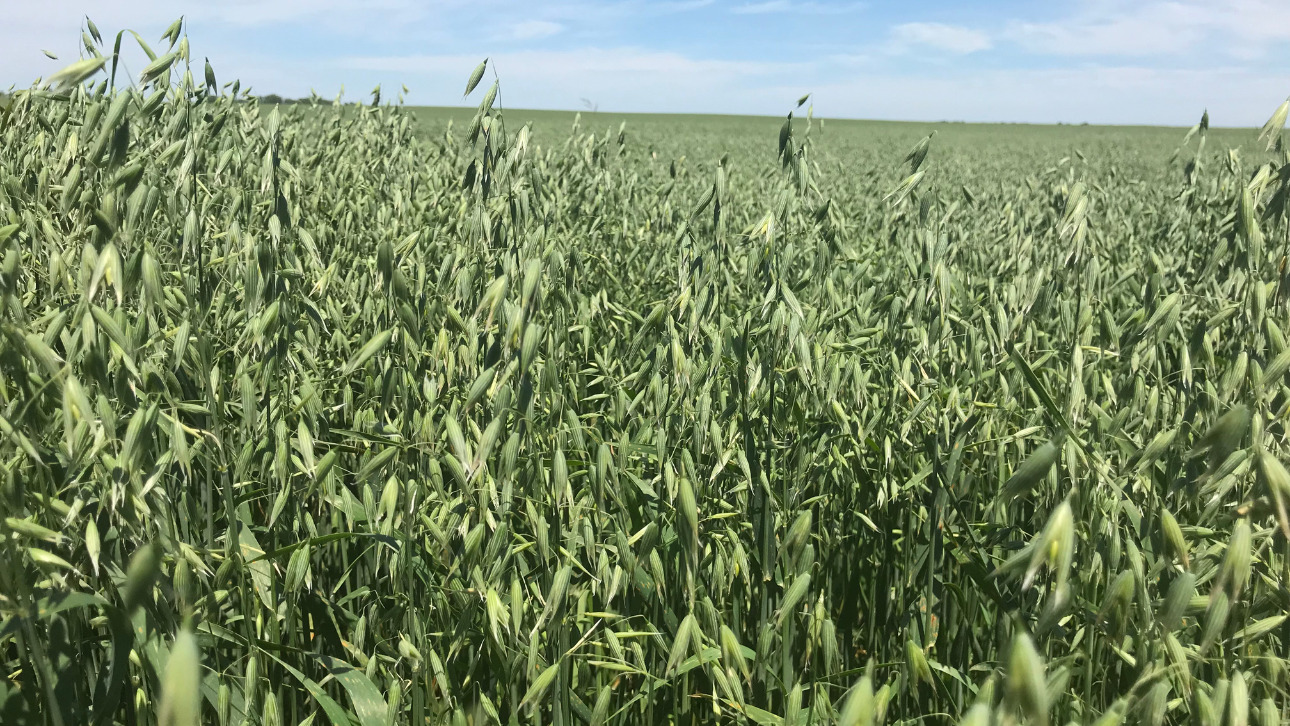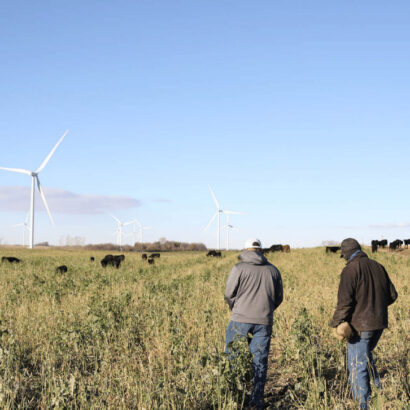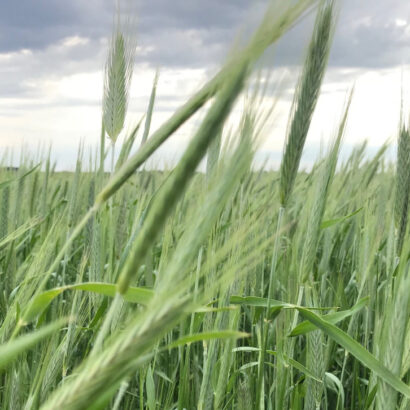The three main spring annual forages include oats, forage barley, and spring triticale. All three are a great option when you need to add additional forage within one growing season. These spring forages are versatile when it comes to planting – they’re forgiving in terms of soil depth and planting temperature in the spring. Keep in mind, an annual forage crops means there will only be one cutting per growing season. This makes them best suited for haying or chopping.
Not sure which one to plant for additional forage on your operation? Let’s weigh your options.
Oats
One of the most common small grains in our home area of the Dakotas is oats, which provide a very flexible option for additional forage. Oats have a 75-day maturity range, and they rise above in situations where there is a wide range of growing conditions. They’re a great forage source if you’re on a budget and looking for an economical option. Among the spring forage options, oats are no doubt the most common in the Midwest.
Forage Barley
If you need a fast-maturing forage option, forage barley is your best bet. Forage barley matures in an average of 65 days and provides the highest quality of the spring small grains. Barley is considered a top-notch option, but it does come at a higher price point. It handles saline soils, has the necessary drought hardiness for dry climates, and provides good, palatable hay. Barley doesn’t require much moisture and it can produce three to four tons of feed. If you’re looking for a high-quality, drought hardy forage option, forage barley will be the best fit – especially if you’re in a time crunch.
Spring Triticale
Triticale is a hybrid cross of wheat and cereal rye. It is the latest maturing of the spring small grains at 85 days. If you’re in a scenario where you need high tonnage feed and you’re not in a rush, triticale will be your best bet as it yields the highest compared to oats and barley. Along with forage barley, spring triticale also provides drought hardiness when mother nature is less generous with moisture. Spring triticale’s standability is the cherry on top that makes it a great option for tough conditions.
Boost Protein with Peas
If you’re in need of a high protein option, we suggest adding forage peas to any three of the small grains above. Crude protein levels increase between 2-4% when forage peas are added into the feed source. Adding the peas also increases yields – beneficial when you need a higher volume of feed. When forage peas are added to small grains for a feed source it is possible to harvest it as dry hay, but we recommend chopping (at soft dough stage) due to the time needed for curing and drying. Chopping will also ensure that the mix is harvested when quality is the highest.
Plan Ahead
Spring small grains will often be the first seeds you put in the ground for the year. Plan ahead now to determine if additional forage will be needed next year, and consider choosing a spring annual small grain to meet that need. If you’re not sure what you’ll need, get in touch with one of our experts to help you make a forage plan for the year ahead.





Discussion
0 Comments